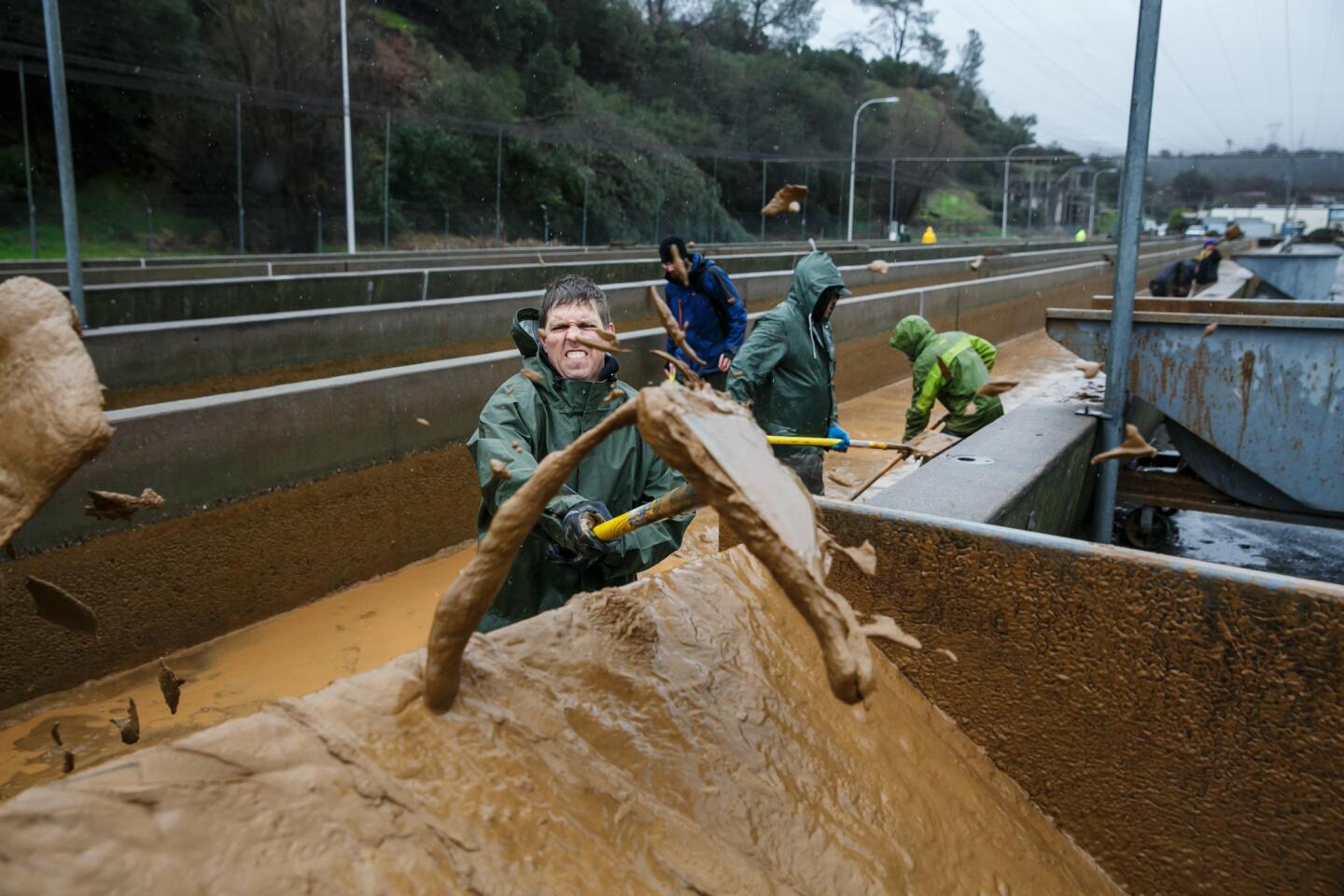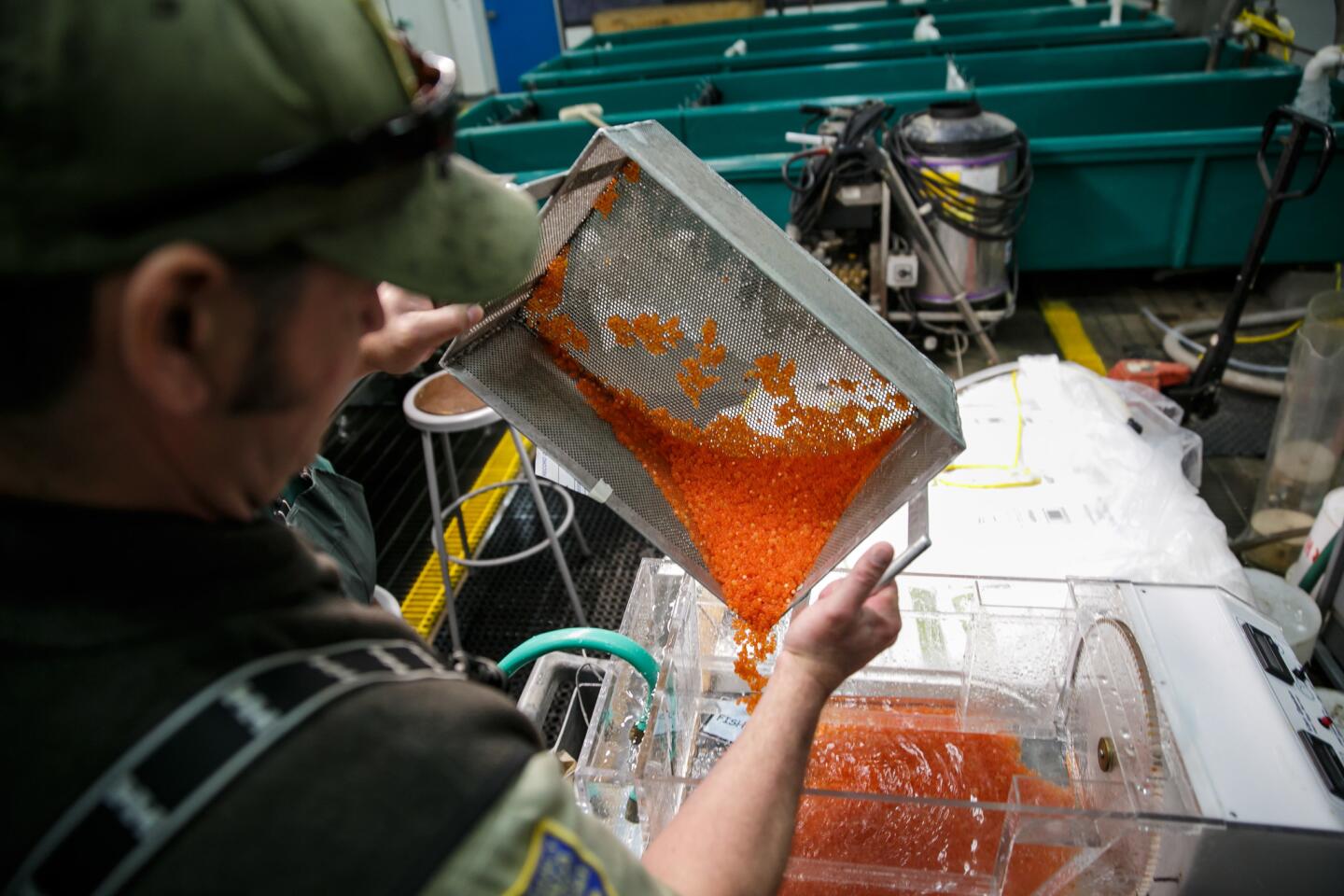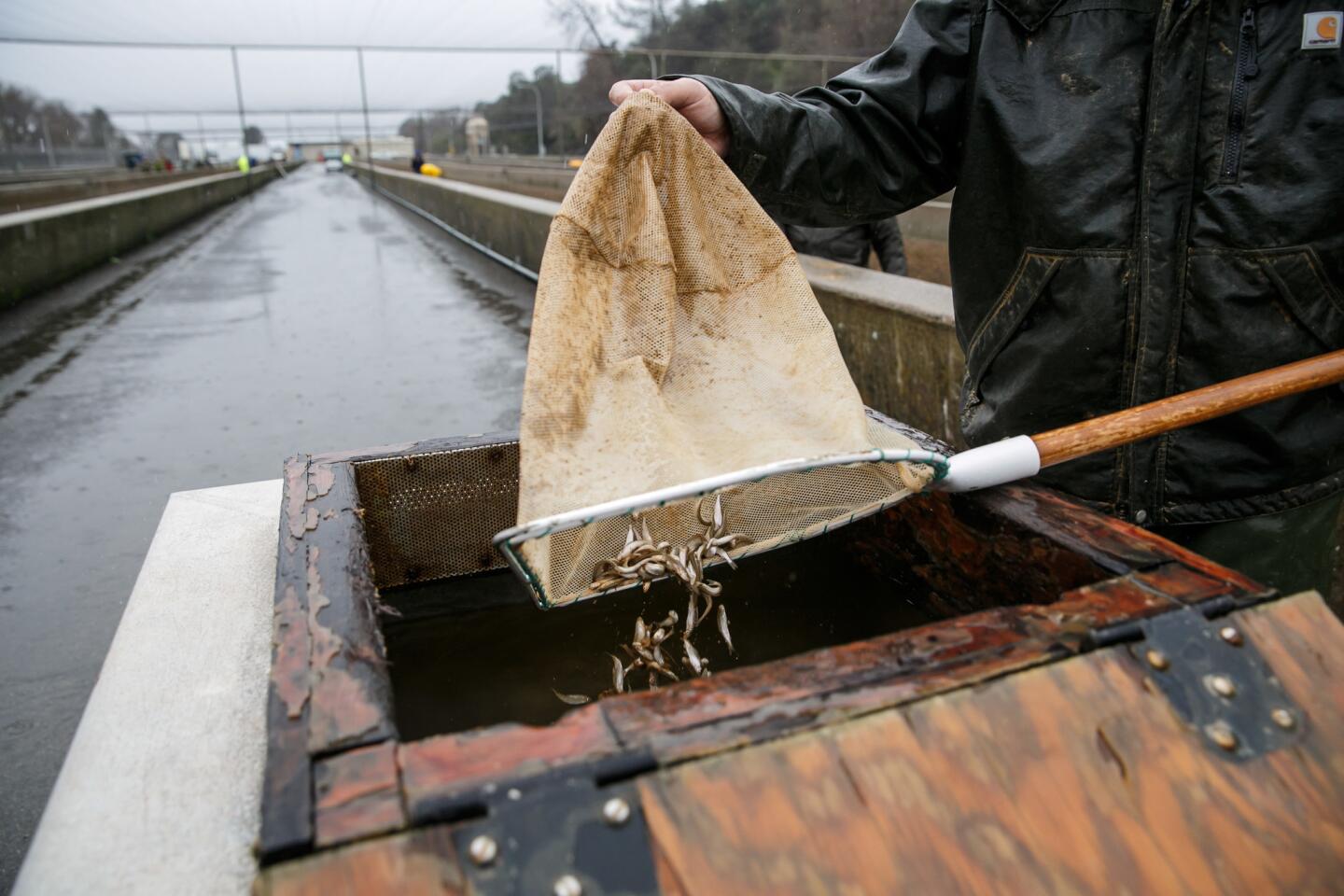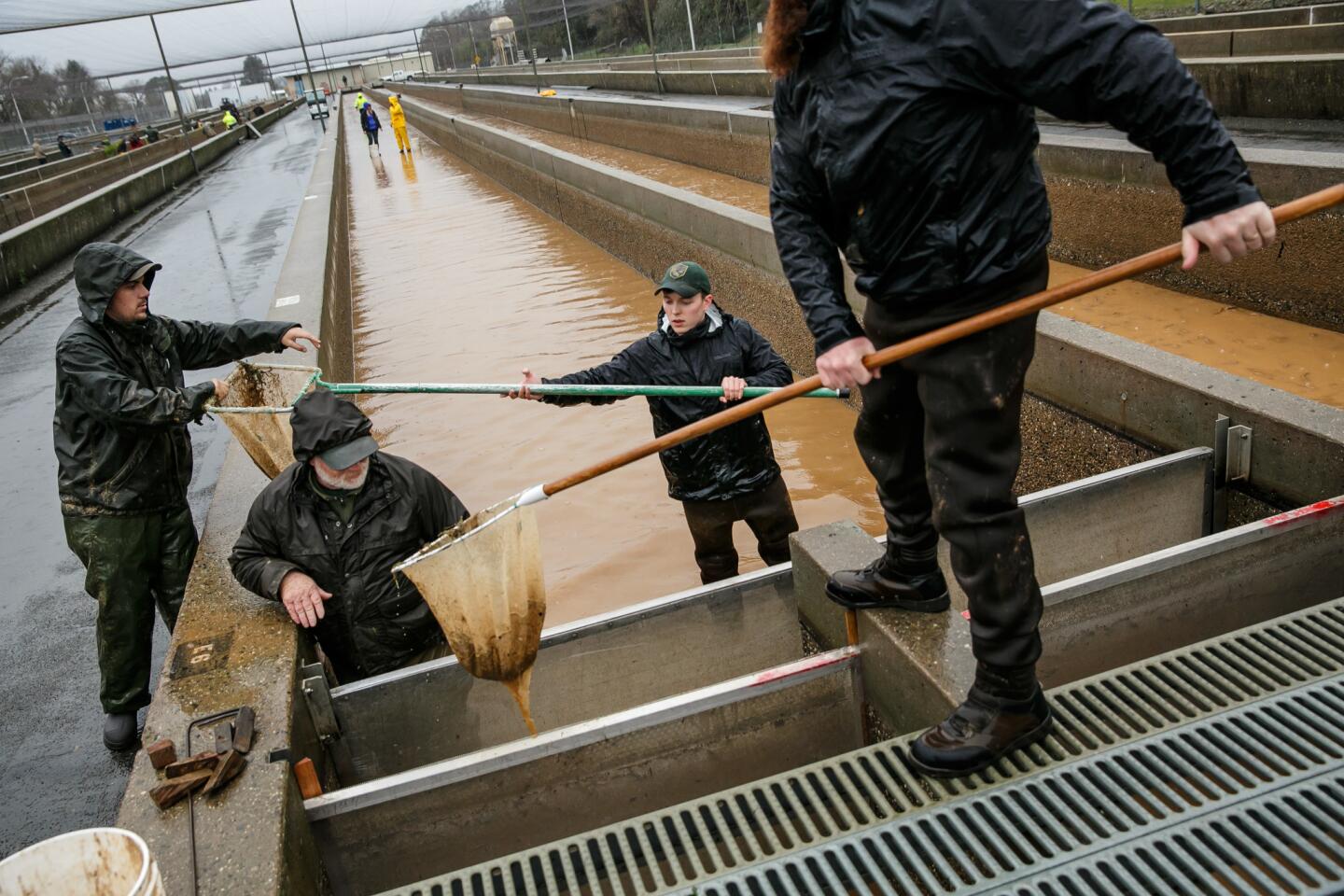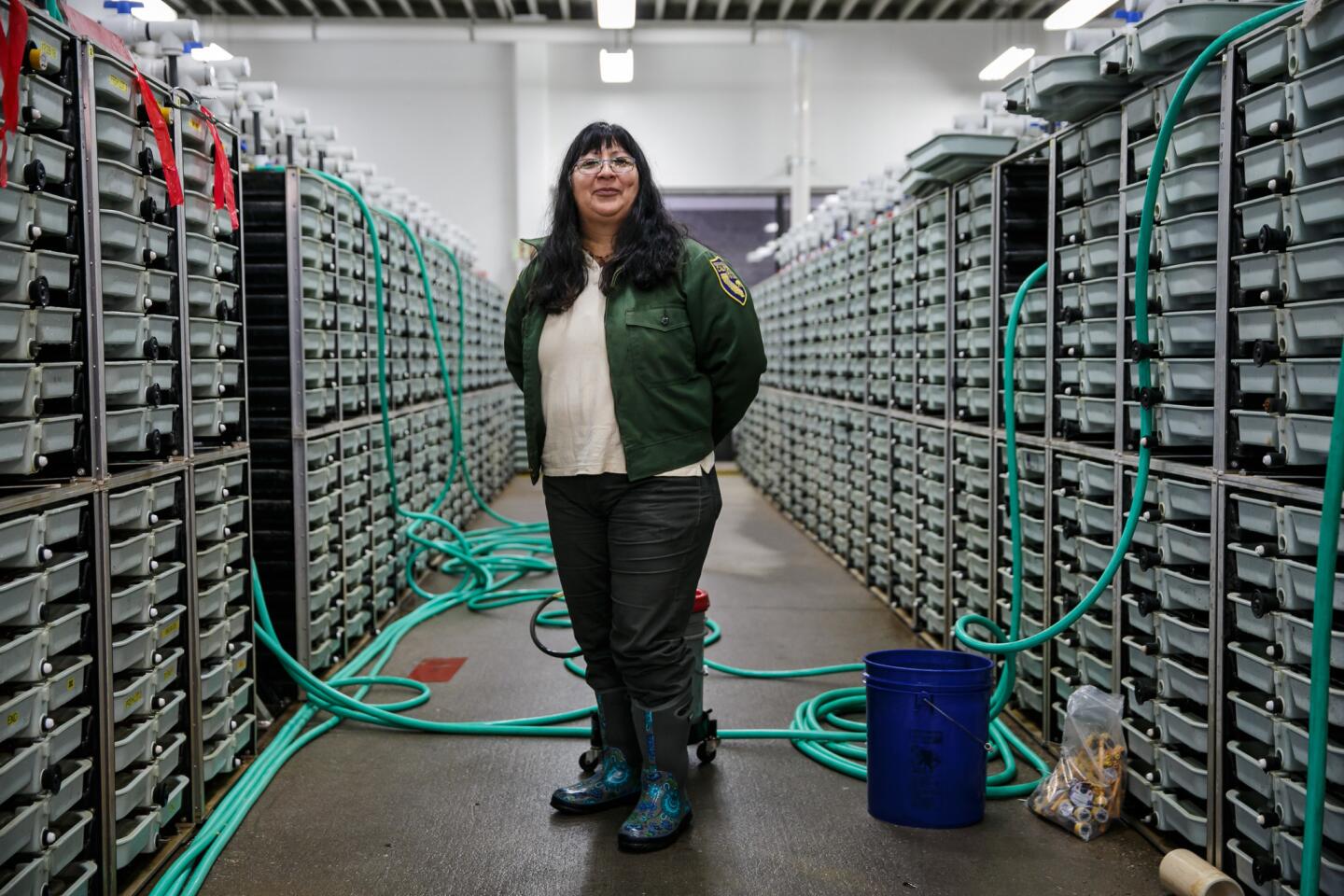Downstream from the stricken Oroville Dam, the Feather River Fish Hatchery manages to save millions of fish
- Share via
Reporting from Oroville, Calif. — On Friday, the staff at the Feather River Fish Hatchery, just downstream from the stricken Oroville Dam, took stock of their losses, gave thanks for their victories and girded for a long, hard recovery after being inundated with debris-laden water the color of chocolate milk.
A few thousand Chinook salmon fry didn’t make it. But millions of others survived, as did 1 million federally endangered steelhead trout eggs.
The dirty water had been spewed from a jagged crater in the dam’s main, concrete-lined spillway discovered after California Department of Water Resources officials increased releases of reservoir water a week ago to offset inflows of rainfall. By the time they halted the releases to inspect the damage, the Feather River below had been transformed into a torrent of fouled river water.
“Our hatchery, which rears salmon and steelhead, draws all of its water from the river,” said facility manager Anna Kastner, 52, wincing at the memory. “Suddenly, it was awash in liquid mud.”
The initial response from the California Department of Water Resources, which manages the towering dam four miles to the north, was disheartening, and out of the question.
“The agency wondered if letting our fish go in the river would increase their chances of survival,” Kastner recalled. “Instead, we marshaled an army of volunteers and put our heads together with one goal in mind: saving the fish.”
The hatchery is the largest in the state, owned and operated by the California Department of Fish and Wildlife. The roughly 10 million young salmon it releases each year in the Feather River and San Pablo Bay, near San Francisco, make up more than half of the annual ocean and inland catch in California.
An estimated 6 million Chinook salmon were immediately transported in tanker trucks to another state wildlife facility about 10 miles from the turgid river.
But Kastner, staffers and a contingent of state fish pathologists and veterinarians feared they were losing a battle to maintain tanks safeguarding a bumper crop of steelhead eggs harvested from spawning fish earlier in the year. Aeration, filtration and cooling systems had been hobbled by sediment.
“Over the next two days, a group of very clever team members rigged together a mechanism to dechlorinate water from garden hoses,” Kastner said. “But that wasn’t sufficient to meet our needs — and time was running out. So, they next devised a larger aeration and filtration system and connected it to a fire hydrant on the property.”
Elsewhere, shovel brigades clad in raincoats and galoshes scooped up tons of smelly mud and rescued dozens wriggling survivors in eight concrete rearing pools, each 10 feet wide and 600 feet long.
They were still at it on Friday. Among them was Larissa Van Der Linde, 31, a scientific aide with the Fish and Wildlife agency.
It’s strenuous, filthy and seemingly endless labor, but Van Der Linde kept up the pace by reminding herself that, as she put it, “We’re shoveling sludge and saving rare fish.”
The hatchery is normally a placid place, the only sounds are the soothing flows of the Feather River. That has been replaced by the scraping of shovels on concrete. But to Kastner and her staff, that is an encouraging sound.
“We’ve got a lot of work ahead of us,” she said. “But we’ve already accomplished great things: Most of our salmon and all of our steelhead eggs are safe.”
Giving her exhausted shovelers an appreciative nod, she added, “Aren’t they something wonderful?”
More to Read
Sign up for Essential California
The most important California stories and recommendations in your inbox every morning.
You may occasionally receive promotional content from the Los Angeles Times.
